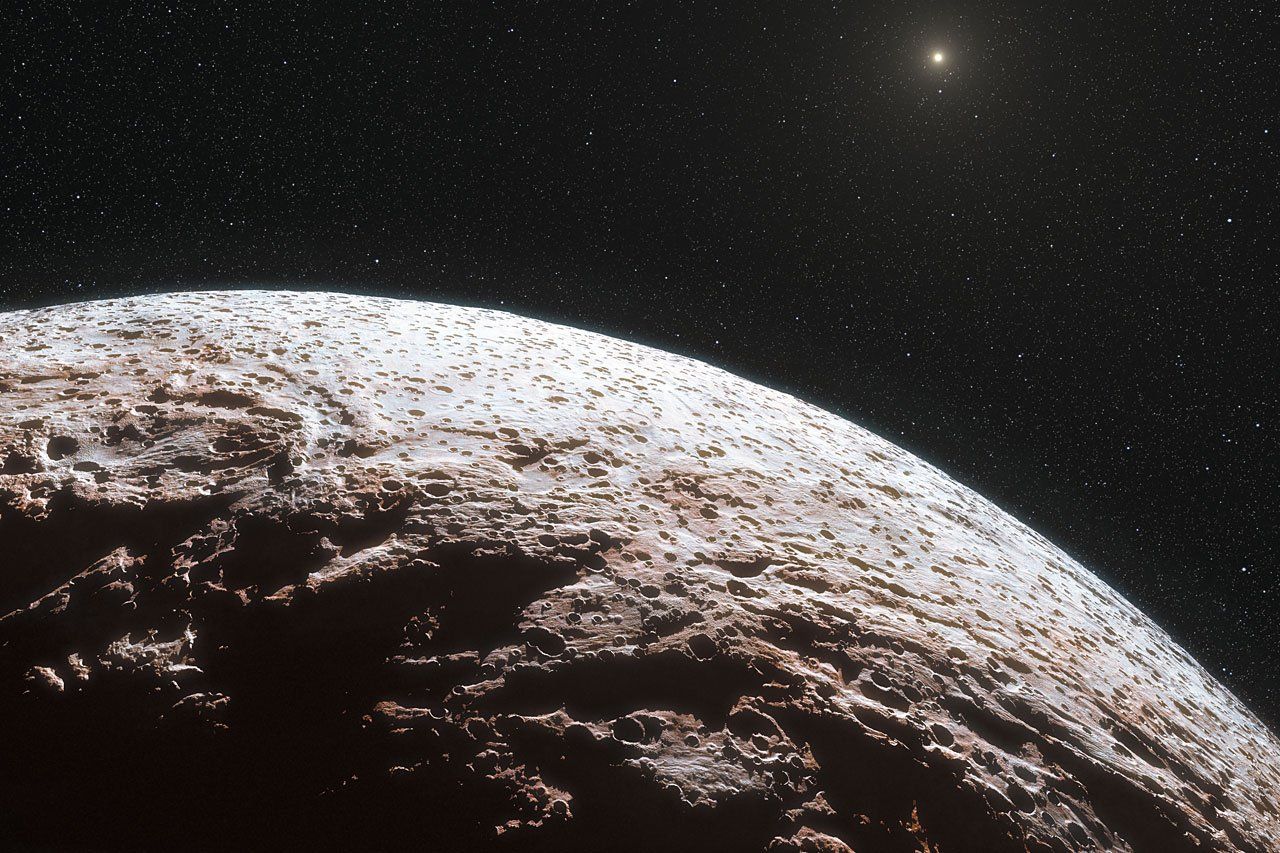This web page is created within BALTICS project funded from the European Union’s Horizon2020 Research and Innovation Programme under grant agreement No.692257.
Plutoids
In 2008, two years after the introduction of the dwarf planet category, the International Astronomical Union proposed a new term – plutoids.
These are celestial bodies orbiting the Sun. The semi-major axis of the orbit of these objects is larger than Neptune’s. The semi-major axis is the average distance from the celestial body to the central object of the system. In contrast to irregularly shaped celestial bodies, the mass of plutoids are sufficient to be spherical. Like dwarf planets, they have not cleared their orbits from objects of similar size and mass. Plutoid satellites are not called plutoids, even if they are large enough to form a spherical object.
Simply put, plutoids are dwarf planets whose orbits are completely or partially behind the orbits of Neptune. Therefore, Ceres, although classified as a dwarf planet, is not a plutoid because its orbit is in the asteroid belt between Mars and Jupiter.
The most popular and oldest members of the plutoid group are Pluto and Eris. Haumea and Makemake are currently added to this group. The most realistic candidates who could get this status in the future are Quaoar, Orcus and Sedna.
| Name | Diameter (km) | Semi-major axis (AV) | Orbital period (years) | Moons |
|---|---|---|---|---|
| Pluto | 2400 | 39,48 | 248 | 5 |
| Eris | 2300 | 67,78 | 558 | 1 |
| Haumea | 1400 | 43,22 | 284 | 2 |
| Makemake | 1400 | 45,72 | 309 | 1 |
| Quaoar | 1110 | 43,62 | 288 | 1 |
| Orcus | 920 | 39,99 | 247 | 1 |
| Sedna | 1000 | 506 | 11 400 | - |
Explanation:
Approved plutoids are colored green
Potential plutoids are colored yellow
The orbital period of Makemake is 310 days. At its nearest point it is 38 astronomical units away and at its furthest 53 astronomical units away. This dwarf planet is the second brightest object in the Kuiper belt after Pluto. Spectral analysis shows that its surface is covered by methane, nitrogen and carbon monoxide ice. It is possible that tar-like hydrocarbons found on Pluto are precipitated on the surface of Makemake. The atmosphere on this dwarf planet is likely to exist at a time when it is closer to the Sun. As moving away from the Sun, the gases in the atmosphere condense and precipitate on the surface, forming a thin, light-reflecting layer.
Makemake has one moon, unofficially called MK2. The 175 km large object was discovered in 2015. Preliminary observations show that it is a very dark object.
It is estimated that the Kuiper belt could be home to at least 200 dwarf planets, with thousands or even tens of thousands in further regions.
Haumea is a dwarf planet that was discovered in 2004. It is named after the Hawaiian island indigenous goddess of creation. Observations show that the dwarf planet resembles a stretched egg and is approximately 1400 km in diameter. The dwarf planet orbits the Sun in 284 Earth years. At its farthest point in orbit, it is 50 astronomical units away, and at its closest, it is 35 astronomical units away from the Sun. Haumea is the third brightest object in the Kuiper belt. Only Pluto and Makemake outperform it.
Recent research shows that Haumea is surrounded by a ring. Thus, Haumea is the first plutoid to be found to have a ring. Haumea has two moons – Hi'iaka and Namaka.
Haumea rotates around its axis very fast. It may take one turnround in 4 hours. The rapid rotation could be explained by the fact that Haumea and its moons were the result of an impressive collision. The fact that Haumea did not break into pieces, rotating so fast around its axis, indicates that it probably consists mainly of hard rocks covered with a thin layer of water ice.
Makemake, which is about 1,400 km large, was discovered in 2005. According to the statutes of the International Astronomical Union, the objects of the Kuiper belt are given names related to the deities of creation. Makemake is the deity of the aboriginal creation of the Easter Islands.





















